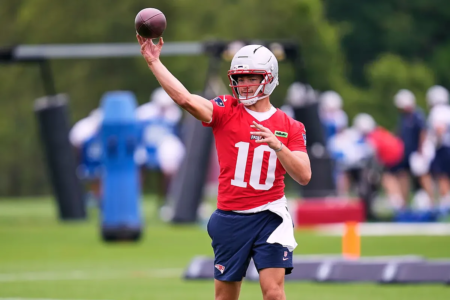In three October games, Micah Parsons produced four sacks, five tackles for loss, six quarterback hits and 18 total pressures – statistics that helped push the Green Bay Packers to an undefeated month and earned him the NFC Defensive Player of the Month award.
It was his second career Defensive Player of the Month honor and comes after a blockbuster trade that sent him from the Dallas Cowboys to Green Bay this summer.
Parsons has emerged as a key defensive force for Green Bay, while the Cowboys‘ defense has struggled to maintain the same level of disruption in his absence.
Since joining the Packers, Parsons has delivered consistent and high-impact performances.
Parsons has excelled in key matchups, demonstrating both consistency and game-changing ability. In Week 7 against the Arizona Cardinals, he registered three sacks and multiple quarterback pressures, earning recognition as Defensive Player of the Week.
In a game against his former team, the Cowboys, Parsons recorded 10 pressures on quarterback Dak Prescott, though only one counted as a sack.
His performance exemplifies his ability to influence games even when statistical totals do not fully capture his impact. Parsons currently leads the NFL in total quarterback pressures, reinforcing his status as one of the league’s premier defensive talents.
But while Parsons‘ early dominance is clear, his arrival raises bigger questions about how much he alone can shift the Packers‘ trajectory, and whether the roster around him is ready to capitalize.
Implications for the Cowboys and Packers
The trade that sent Parsons, two first-round picks, and defensive tackle Kenny Clark to Green Bay was intended to provide the Cowboys with roster flexibility and address other areas of need.
However, Dallas’ defensive unit has struggled to fill the void left by Parsons‘ departure, highlighting his importance as a disruptive presence and leader.
Analysts have noted that the team’s defensive identity has shifted, and its ability to consistently pressure opposing quarterbacks has diminished.
For Green Bay, Parsons‘ versatility has allowed the defense to generate pressure from multiple positions along the line, creating opportunities for teammates and complicating opponents’ protection schemes.
His ability to defeat blockers, attract attention from multiple defenders, and adapt to different roles has enhanced the overall effectiveness of the Packers‘ defensive front.
Head coach Matt LaFleur has praised Parsons for his consistent impact and the way his play opens opportunities for other players.
The contrasting outcomes for the two teams underscore the significance of elite defensive talent.
Parsons‘ performance has strengthened Green Bay‘s contention in the NFC, while Dallas is now adjusting to the absence of one of its most dynamic defenders. His impact serves as a clear example of how a single player can shift team performance and influence both defensive schemes and game outcomes.
As the season progresses toward the trade deadline, the ramifications of Parsons‘ trade remain apparent. For the Cowboys, losing an elite pass rusher has altered defensive dynamics, while for the Packers, acquiring Parsons has provided immediate results.
Parsons‘ continued dominance highlights both his individual excellence and the strategic importance of retaining or acquiring top-tier defensive talent in the NFL.
Read the full article here











